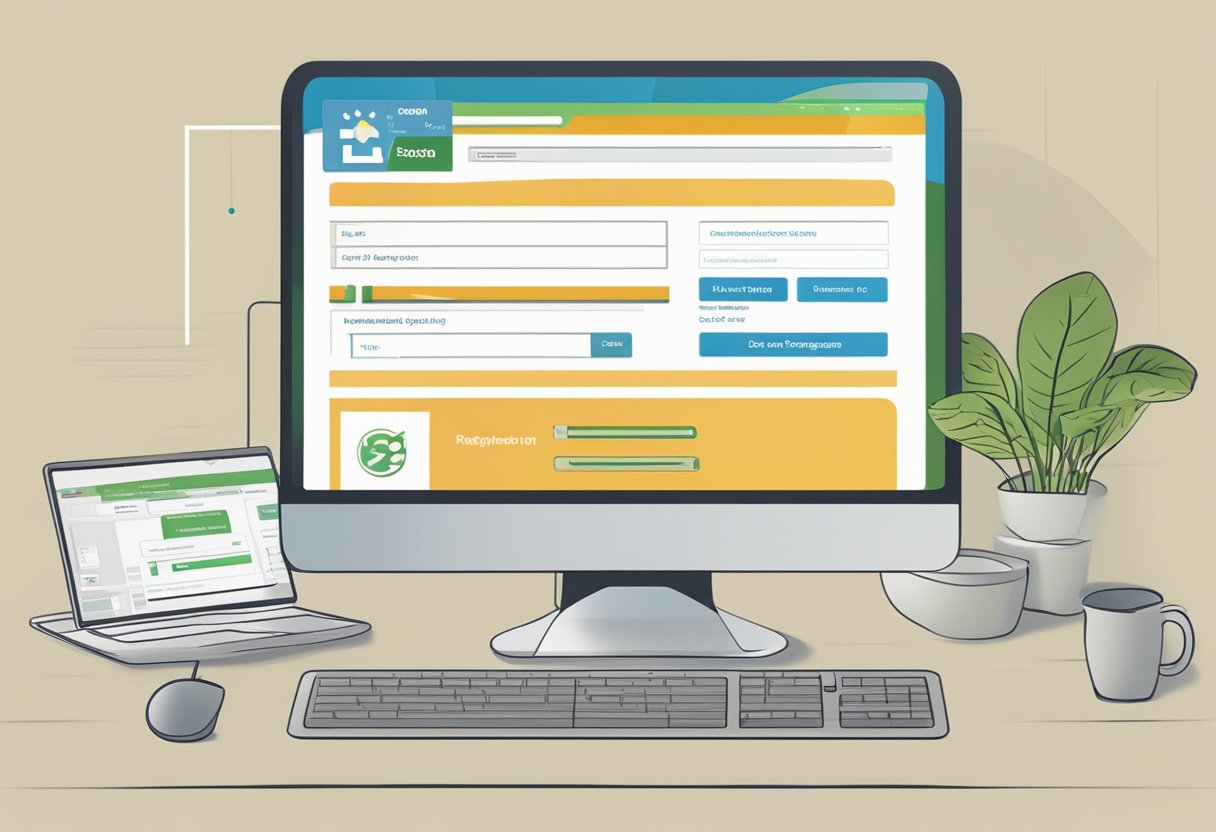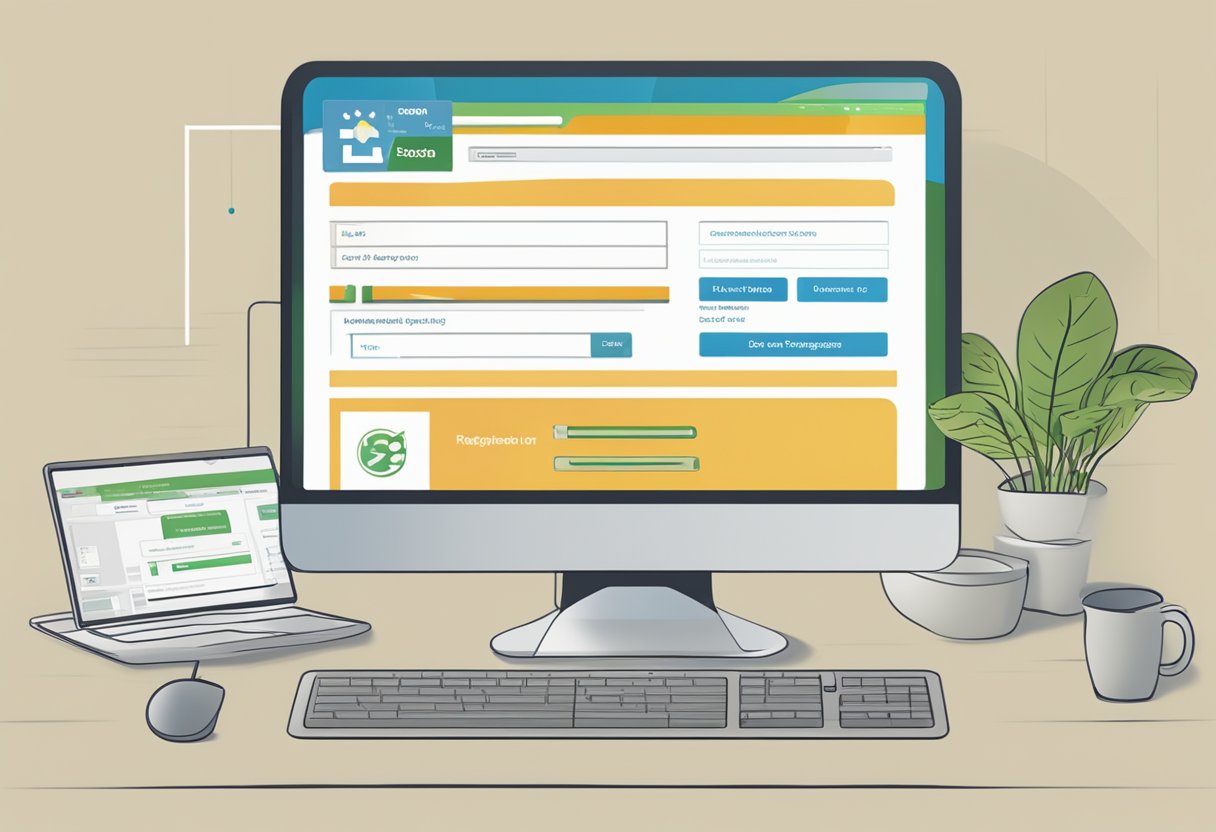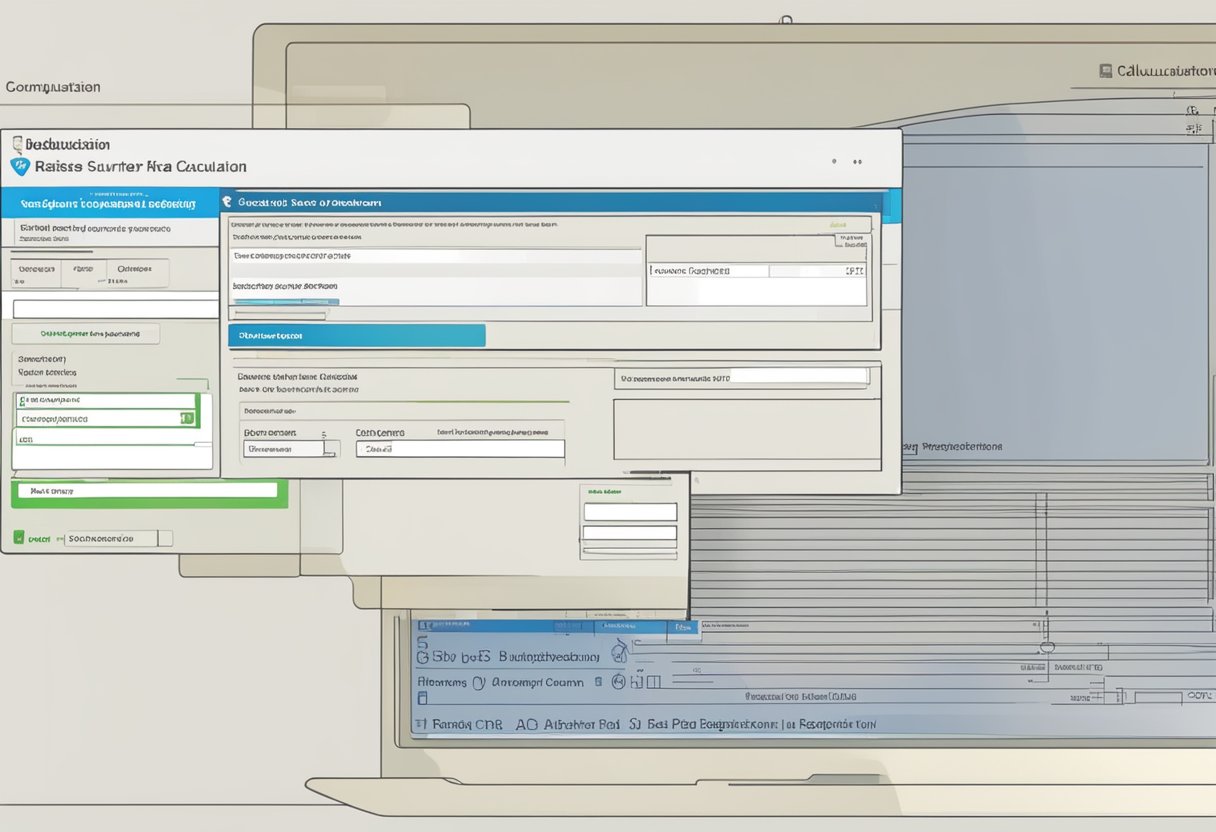 Mouse cursor clicking on "Register Online" button" width="1216" height="832" />
Mouse cursor clicking on "Register Online" button" width="1216" height="832" />
Farmers across various regions frequently seek financial assistance to afford the necessary inputs for their agricultural activities. The DAP, or Di-Ammonium Phosphate, subsidy is one significant form of support provided by governments to alleviate the cost burden of fertilizers on farmers. Through online registration platforms, the process of obtaining such a subsidy has been streamlined, allowing for greater accessibility and convenience. These online systems enable the efficient dissemination of subsidies, ensuring that farmers receive timely financial support for their fertilizer purchases.
 Mouse cursor clicking on "Register Online" button" width="1216" height="832" />
Mouse cursor clicking on "Register Online" button" width="1216" height="832" />
The effectiveness of the DAP subsidy hinges on an uncomplicated online registration system. By visiting designated government websites or associated online portals, farmers can access the registration forms and enter their details. The system typically requires basic identification information and proof that the applicant is actively engaged in farming. Once registered, farmers can potentially benefit from reduced prices on fertilizer products, which can lead to more profitable farming operations. The aim of introducing such schemes is not just to provide immediate financial relief but also to encourage best practices in fertilizer use, contributing to sustainable agriculture development.
Diammonium phosphate (DAP) subsidies are vital government initiatives designed to reduce the financial burden on farmers and support agricultural sustainability. Through subsidies, they aim to enhance farm yield and contribute to food security by making DAP fertilizer more affordable.
DAP fertilizer is an essential resource for farmers, as it provides the necessary phosphorus and nitrogen needed for crop growth. The availability of DAP at a lower cost due to subsidies can lead to increased agricultural productivity, which is crucial for maintaining the food supply for a growing population.
The key benefits of DAP subsidy include:

The DAP Subsidy Registration process encompasses specific eligibility criteria crucial for farmers and landowners. These regulations ensure that the subsidy reaches the intended beneficiaries efficiently.
Farmers must prepare certain documents to prove eligibility. Primarily, a valid Computerized National Identity Card (CNIC) is mandatory. The CNIC number facilitates tracking and validates the identity of applicants.
To qualify for the DAP Subsidy, both landowners and leaseholders (Thekedars) are eligible. Applicants must be engaged in agriculture, and the subsidy is aimed to assist them in purchasing diammonium phosphate (DAP) fertilizer, a vital input for crops. The government’s initiative targets a transparent distribution of financial assistance to the agricultural sector.

The DAP (Diammonium Phosphate) subsidy registration online is designed to streamline the process for farmers to receive financial support. It utilizes specific personal identification details like the CNIC number and incorporates verification measures to ensure transparency and accuracy.

The subsidy program has been structured to provide financial assistance to farmers, with specific rates attached for varying crops and fertilizers. These rates are important for the agricultural stakeholders to understand how much support they can access for their cultivation needs.
The subsidy initiative includes a subsidy of PKR 1200 per acre for white corn seeds, which aims to lighten the financial burden on farmers growing this particular crop. Furthermore, for cotton seeds, a subsidy of PKR 1000 per bori is available, enabling farmers to save substantially on the initial input costs.
In addition to crop-specific subsidies, a broader fertilizer subsidy applies to the purchase of DAP fertilizer. Each bori of DAP fertilizer comes with a subsidy of PKR 1000, reducing the cost impact on the farmers. Other kinds of fertilizers also benefit from this program, including Single Super Phosphate (SSP), Nitrophos (NP), and NPK fertilizers, with varying subsidy amounts:
Farmers are incentivized to increase agricultural productivity through these targeted subsidies, which are carefully calculated to align with the sector’s needs and market dynamics.
The subsidy distribution for DAP fertilizer has been meticulously structured to enhance ease and transparency. Farmers receive financial support through two primary systems: the voucher system and the recently introduced ‘Kisan Card’.
The voucher system functions by integrating a voucher number within each fertilizer bag. Farmers in Punjab are required to locate this hidden voucher number and send it along with their CNIC information to a designated shortcode, such as 8070. Upon successful submission, the Punjab Agriculture Department processes the request, and the subsidy amount is made available to the farmer. This method ensures that the government aid reaches registered farmers precisely and promptly.
In an effort to further streamline the subsidy distribution, the government has introduced the ‘Kisan Card’. The Kisan Card acts as an electronic wallet that holds the subsidy amount for the farmer. To access and utilize these funds, farmers are required to interact with Punjab Agriculture Department Offices or associated banks that support the ‘Kisan Card’ system. This modern approach aims to expedite the subsidy delivery and mitigate the chances of fraudulent activities in the agriculture department‘s operations.
The advancement of digital technology has streamlined the process of subsidy verification for farmers. They now have access to dedicated software and applications that facilitate the rapid authentication of their subsidy claims.
Digital solutions enable farmers to go through the verification process effortlessly by integrating databases with user-friendly interfaces. These software tools are designed to handle large volumes of data, ensuring that the status of a subsidy application is available in real-time. This coupling of comprehensive software systems with agricultural subsidies has significantly reduced manual labor and errors.
Farmers can download the DAP Subsidy Verification App directly onto their smartphones, providing an efficient channel to verify their DAP subsidy. This app guides users step-by-step through the authentication process, requiring details like CNIC numbers. Upon submission, the app connects to a secure database, allowing farmers to check the status of their DAP subsidy application quickly.
By utilizing the DAP Subsidy Verification App, farmers are armed with a powerful digital tool that enhances transparency and simplifies the task of claiming agricultural subsidies.
Agriculture Departments, particularly in Punjab, have streamlined processes for farmers seeking subsidies, with dedicated helpline support to resolve any issues.
The Punjab Agriculture Department actively supports the agricultural sector by providing subsidies such as those available for DAP (Diammonium Phosphate) fertilizer. This initiative helps to alleviate the financial burden on farmers in key regions including Multan, D.G. Khan, and Bahawalpur. Detailed information on current subsidies and registration processes can be found on the Agriculture Department’s website.
For assistance, farmers may contact the helpline support with inquiries regarding the subsidy registration process. The helpline number is a point of contact for direct support and is staffed by knowledgeable representatives ready to provide clear guidance.
The helpline ensures that every farmer can access the necessary information and complete the registration process efficiently.
Effective enhancement of farming practices is integral to increasing the agricultural sector’s productivity and sustainability. The introduction of subsidies for Di-ammonium Phosphate (DAP) can be instrumental in improving crop yields through better fertilizer use, contributing to sustainable development.
Subsidies on DAP directly influence farmers’ ability to purchase sufficient fertilizers, which can lead to notable improvements in crop yields. DAP is a significant source of nitrogen and phosphorus, two essential nutrients that support the growth and development of plants. By making DAP more affordable, farmers can adequately satisfy their crops’ nutritional demands, resulting in healthier plants and potentially higher yields.
Fertilizer subsidies can encourage the adoption of advanced farming methods, particularly in the use and management of fertilizers like NPK, which contain critical nutrients – nitrogen, phosphorus, and potassium. Streamlined access to these balanced fertilizers ensures that plants receive a comprehensive mix of nutrients, promoting robust growth and improving resistance to diseases. The long-term benefits include not only higher productivity but also the promotion of practices that are environmentally considerate and economically viable for farmers.